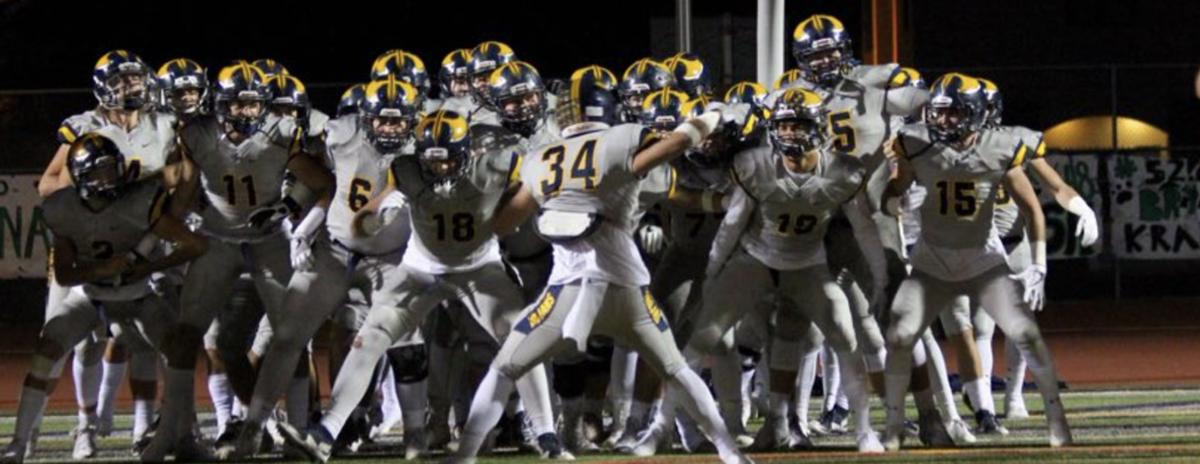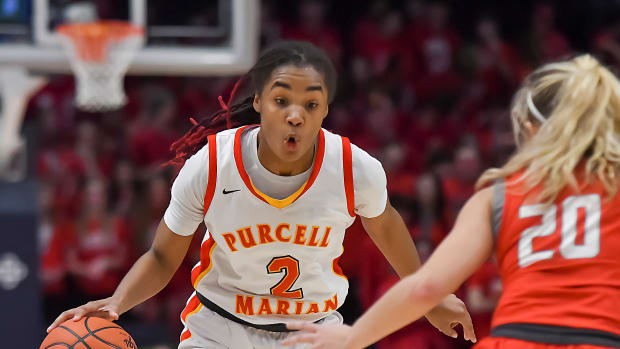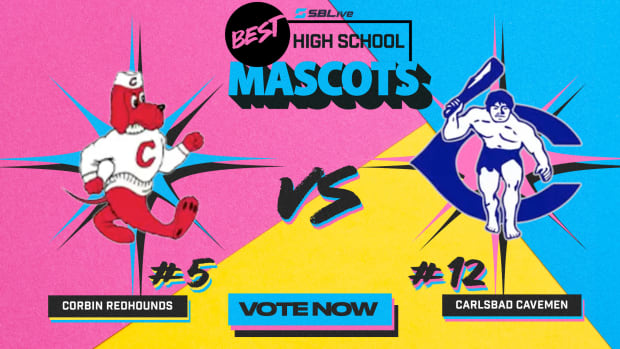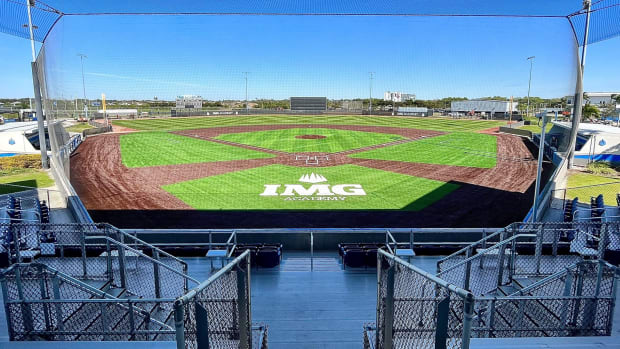When will high school football in the CIF Sac-Joaquin Section return? Here’s what you need to know

California Gov. Gavin Newsom updated the state’s guidance on the return of youth and high school sports on Friday, clearing a path for the return of football and other outdoor sports. Counties that meet the new state criteria for COVID-19 case rates will be allowed to resume moderate and high-contact outdoor sports – including football – on Feb. 26.
So what does that mean for the counties in the CIF Sac-Joaquin Section? Here’s what you need to know:
WHICH SPORTS CAN NOW BE PLAYED?
The Sac-Joaquin Section decided to allow their leagues to make up their own sports calendars, so many leagues allowed purple tier sports such as golf, swimming and diving, tennis, track and field and cross country to already begin. There will not be any section or state playoffs for any sports this school year.
The new guidance from the California Dept. of Public Health now allows for outdoor moderate-contact sports (baseball, softball, girls lacrosse, outdoor volleyball, doubles tennis and outdoor cheerleading) and outdoor high-contact sports (football, soccer, boys lacrosse and water polo) to resume. However, the moderate-contact and high-contact outdoor sports can only resume if the county in which the school is located has case rates at or below 14 per 100,000 people.
The per 100,000 case rate statistics will be updated every Tuesday. Right now, some counties in the Sac-Joaquin Section meet the threshold, like Mariposa County, and some don't, like Sacramento County. Once the counties in the Section meet the threshold and leagues determine those sports to be in season, outdoor moderate-contact and high-contact sports can start.
VIEW THE LATEST COUNTY METRICS HERE
WHEN CAN INDOOR SPORTS START?
There was no updated guidance from the CDPH on indoor sports, so basketball, indoor swimming/diving, indoor cheer, indoor badminton, volleyball and wrestling will not begin on their scheduled start dates, unless the current guidance is changed. These sports could be moved outdoors and start as soon as counties get below 14 cases per 100,000 people.
WHAT DO STUDENT ATHLETES HAVE TO DO TO PLAY?
When their county is approved to play, here is what the guidelines require for student athletes:
- Informed Consent (a waiver)
- Testing – antigen or PCR (regular and postseason antigen or PCR testing of sports participants and coaches weekly. If competing, testing performed with test results made available within 24 hours of play)
The testing requirement above only applies in the following situations:
- For football, rugby and water polo as these are high contact sports that are likely to be played unmasked, with close, face to face contact exceeding 15 minutes.
- When adjusted case rates for the county are between 14-7 per 100,000.
- For sport participants 13 years of age or above as evidence shows that younger children do not seem to be major sources of transmission—either to each other or to adults.
Only football, rugby and water polo athletes over the age of 13 have to be tested weekly. Testing is not required in other sports. If case rates fall below seven per 100,000, then testing is no longer required.
CAN FANS ATTEND HIGH SCHOOL SPORTS CONTESTS?
The guidance from the state says "immediate household members" will be allowed to attend games:
- Limit observation of youth sports (age 18 years and under) to immediate household members, and for the strict purpose of age appropriate supervision. This includes observation of practice and competition. Limit number of observers to ensure physical distance can be maintained, reduce potential crowding, and maintain indoor and outdoor capacity limits.
- Consider Video streaming of games so that they can be watched “live” from home
FOR SPORTS THAT HAVE THE GREEN LIGHT, CAN TOURNAMENTS TAKE PLACE?
In a word, no. But the guidance from the CDPH allows for exceptions:
“No tournaments or events that involve more than two teams to occur. Exceptions may be made, with authorization from the local health department where the event is being held and each of the local health departments where teams originate from, for sports where individual competitors from multiple teams are routine such as: track and field; cross-country; golf; skiing/snowboarding; tennis; swimming/diving/surfing; biking and equestrian events … Only one competition, per team, per day maximum to be played. “
CAN TEAMS/INDIVIDUALS FROM SEPARATE COUNTIES PLAY EACH OTHER?
Teams and individuals from different counties can compete against each other, with conditions. Here’s what the guidance says:
- Inter-team competitions, meets, races, or similar events are permitted to occur only if (a) both teams are located in the same county and the sport is authorized; or (b) teams are located in immediately bordering counties and the sport is authorized.
- The county-based authorizations apply to the locations/counties in which the teams, schools, clubs, leagues, and similar organizations are functionally based (e.g., where the players reside, where facilities are located, etc.)
- Local Health Departments to be notified of any cross county competitions within their jurisdiction and reserve the right under their own discretion to deny the competition at any time in their jurisdiction. Teams participating in cross county competitions will follow the more stringent rules if the participating teams are coming from counties that may be at different case rate thresholds.
- Teams adhere to current CDPH Travel Advisory recommendations when determining travel for competition in neighboring counties.
AS OF RIGHT NOW, CAN ANYTHING BE CONDUCTED INDOORS?
Very little can be done indoors. The indoor guidance from the CDPH has not changed. Here’s what the guidance says about training indoors:
“Physical conditioning, practice, skill-building, and training that can be conducted outdoors, with 6 feet of physical distancing, and within stable cohorts are authorized regardless of case rate or sport. Such activities may be conducted indoors consistent with restrictions by Tier in the Gym & Fitness Center Guidance Capacity.”
ARE FACE COVERINGS REQUIRED DURING PLAY?
Masks will not be required while competing. While not competing, masks should be worn.
The new guidance highly recommends face masks be worn “as tolerated”:
“Face coverings worn by participants during practice, conditioning and during competition, even during heavy exertion as tolerated. See the American Academy of Pediatrics Interim Guidance on Return to Sports [1] for specific exceptions where the face covering may become a hazard.”
The guidance goes on to state that masks be “implemented to the greatest extent possible and are strongly encouraged,” for outdoor moderate-contact and high-contact sports.
WHAT ARE THE RECOMMENDATIONS ON HOW TO TRAVEL TO GAMES?
Here’s what the guidance says about travel:
- Bus/van travel for members of a team may pose a greater risk. To mitigate COVID-19 transmission risk during bus/van travel, employ universal masking, physical distancing and windows to remain open the full duration of the trip unless not feasible.
- Plan for proper communication of all travel rules, protocols and expectations to everyone in the travel party. When feasible, teams should aim to travel and play the same day to avoid overnight stays.
- Travel by private car limited to only those within the immediate household.
MORE RECOMMENDATIONS FROM THE CDPH
- Limit participation by athletes and coaches during practice and competition to one team, and refrain from participating with more than one team over the same season or time period. For larger teams, limit mixing by establishing stable smaller training groups for drills and conditioning.
- Review practice or game footage virtually, to the greatest extent possible. If not feasible, then it should be conducted outdoors, with all participants wearing face coverings and following appropriate physical distancing measures.
- Face coverings to be worn when not participating in the activity (e.g., on the sidelines).
- Face coverings to be worn by coaches, support staff and observers at all times, and in compliance with the CDPH Guidance for the Use of Face Coverings.
- Observers maintain at least 6 feet from non-household members.
- No sharing of drink bottles and other personal items and equipment.
- Mixing with other households prior to and post any practice or competition must strictly adhere to current gathering guidance.
- Limit indoor sports activities (practice, conditioning) to comply with capacity limits (which shall include all athletes, coaches, and observers) indicated in current CDPH Gym & Fitness Center Guidance Capacity.
- Associated indoor activities for the team (e.g., dinners, film study) are prohibited if engaged in competition given evidence that transmission is more likely to occur in these indoor higher risk settings.
- Teams must not participate in out-of-state games and tournaments; several multistate outbreaks have been reported around the nation, including California residents.





